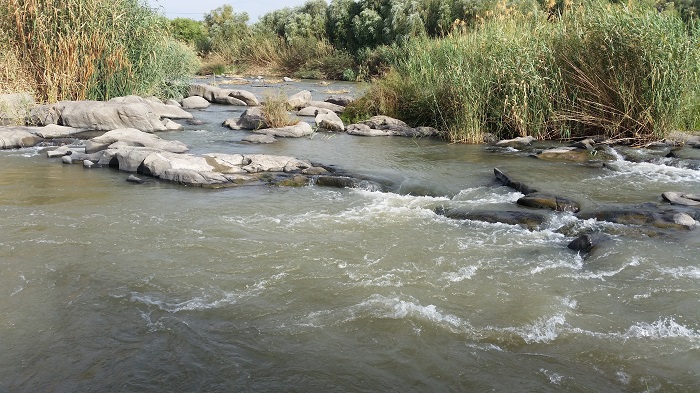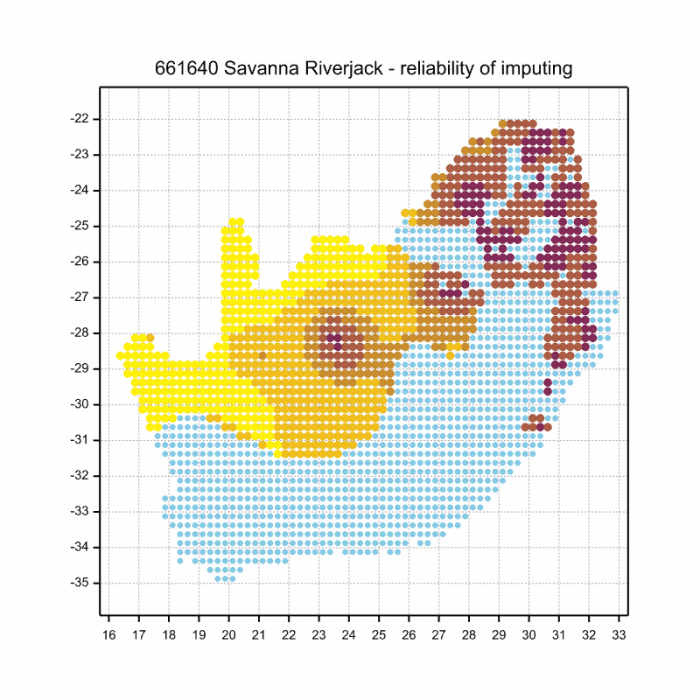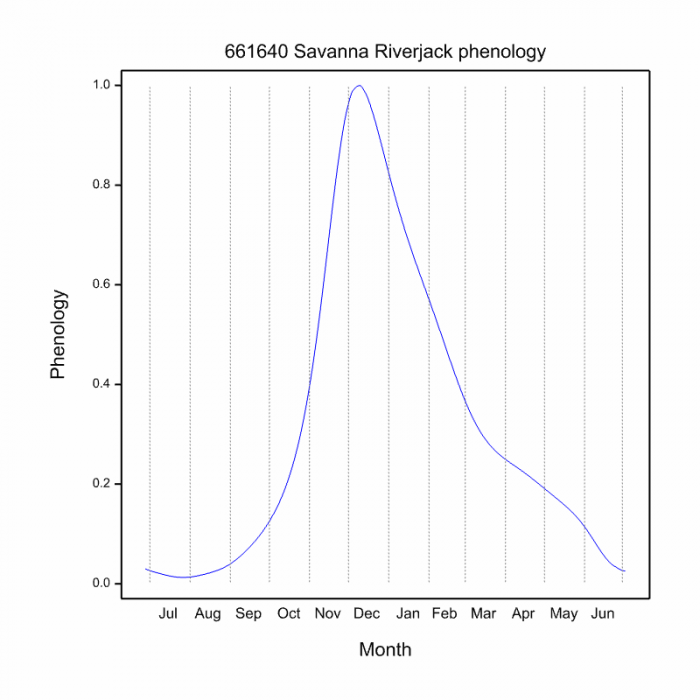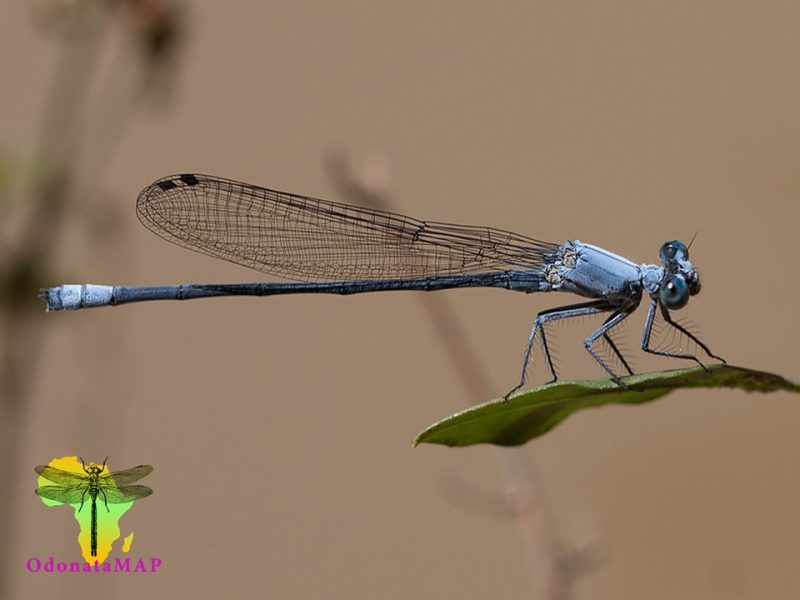View the above photo record (by Gregg Darling) in OdonataMAP here.
Find the Savanna Riverjack in the FBIS database (Freshwater Biodiversity Information System) here.
Family Platycnemididae
Mesocnemis singularis – SAVANNA RIVERJACK
Identification
Medium sized
Length up to 44mm; Wingspan attains 62mm.
Robust for a damselfly, with a distinctive shape and posture. Males are easily recognised as there are no similar looking species in Southern Africa. Adult males are covered in pale blue-white pruinosity.
Females resemble those of Metacnemis valida (Blue Riverjack). The two are similar in size and shape and both are predominantly brown with darker markings. Metacnemis valida females have a prominent white diagonal band on the sides of the thorax. This is absent in Mesocnemis singularis. Additionally the two species are not known to co-occur.
Click here for more details on identification.

Mkuze River, KwaZulu-Natal
Photo by Ryan Tippett

Mkuze River, KwaZulu-Natal
Photo by Ryan Tippett
Habitat
Its natural habitats include open, rocky rivers and streams in savanna, bush or forest; as well as rocky shores of lakes. Mesocnemis singularis prefers fast flowing water, including broken and white water.

Behaviour
Perches conspicuously near the water on rocks and overhanging or emergent twigs and stems.
Most active from October to May, but likely to fly all year round at some warmer sites (See Phenology below).
Distribution
This species is widespread in sub-Saharan Africa; it has been found in Angola, Botswana, Cameroon, the Democratic Republic of the Congo, Ivory Coast, Gabon, Ghana, Guinea, Kenya, Liberia, Malawi, Mozambique, Namibia, Nigeria, Sierra Leone, South Africa, Sudan, Tanzania, Togo, Uganda, Zambia, and Zimbabwe.
Below is a map showing the distribution of records for Savanna Riverjack in the OdonataMAP database as at February 2020.

The next map below is an imputed map, produced by an interpolation algorithm, which attempts to generate a full distribution map from the partial information in the map above. This map will be improved by the submission of records to the OdonataMAP section of the Virtual Museum.


Ultimately, we will produce a series of maps for all the odonata species in the region. The current algorithm is a new algorithm. The objective is mainly to produce “smoothed” maps that could go into a field guide for odonata. This basic version of the algorithm (as mapped above) does not make use of “explanatory variables” (e.g. altitude, terrain roughness, presence of freshwater — we will be producing maps that take these variables into account soon). Currently, it only makes use of the OdonataMAP records for the species being mapped, as well as all the other records of all other species. The basic maps are “optimistic” and will generally show ranges to be larger than what they probably are.
These maps use the data in the OdonataMAP section of the Virtual Museum, and also the database assembled by the previous JRS funded project, which was led by Professor Michael Samways and Dr KD Dijkstra.
Phenology



